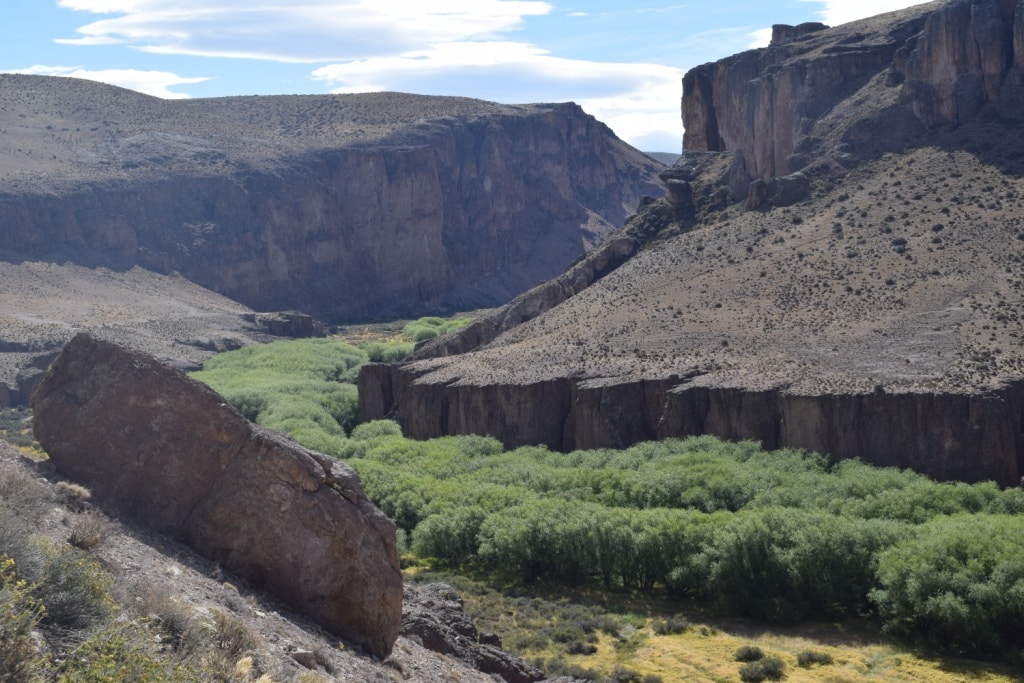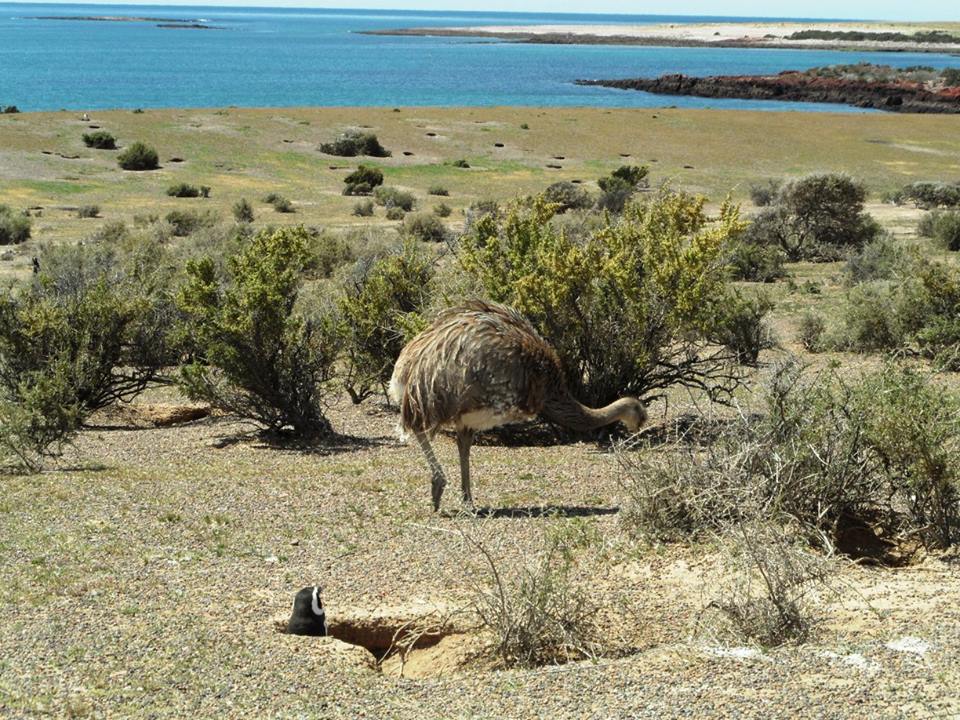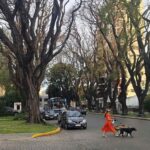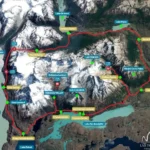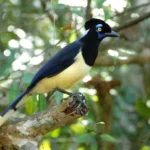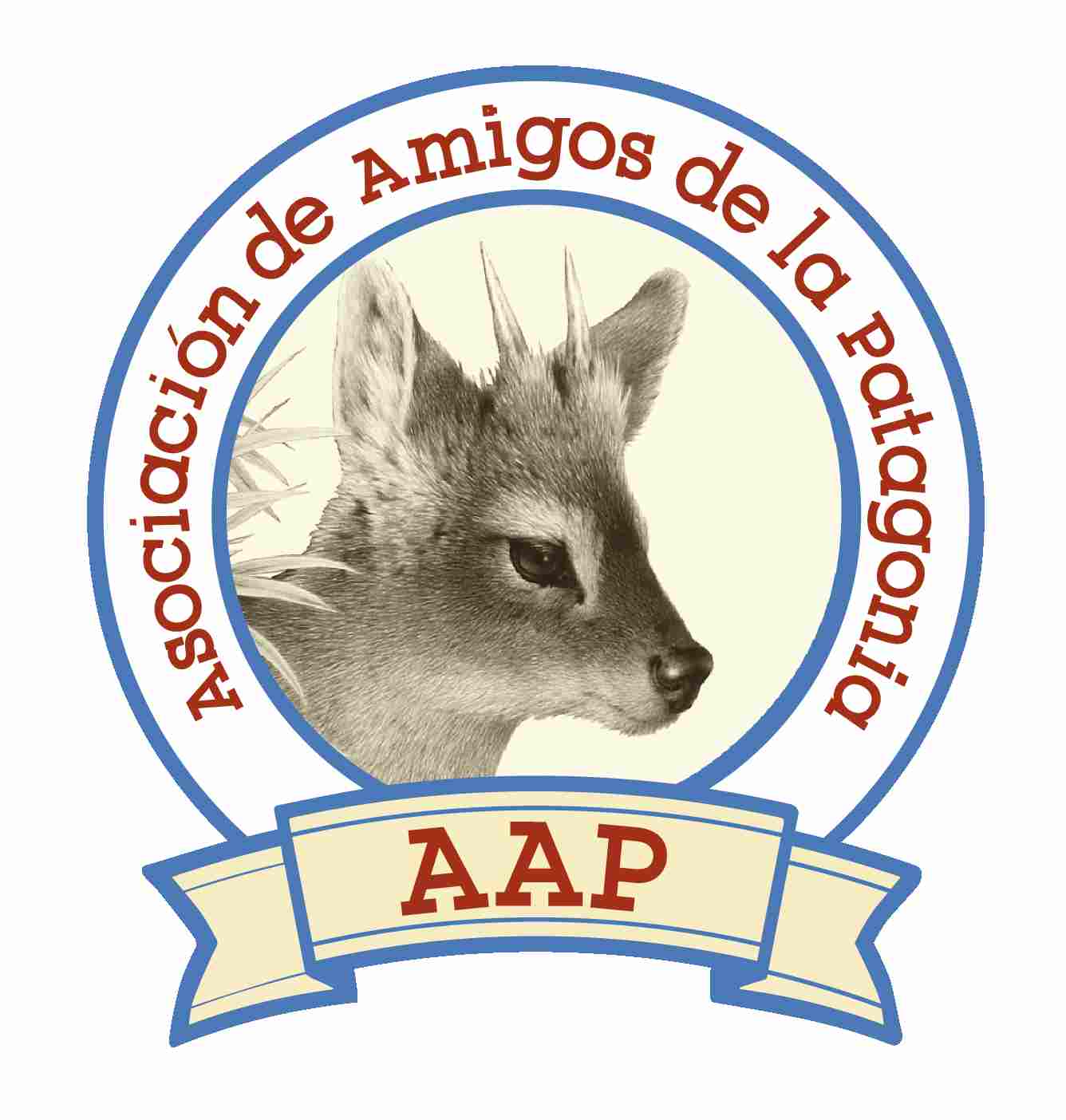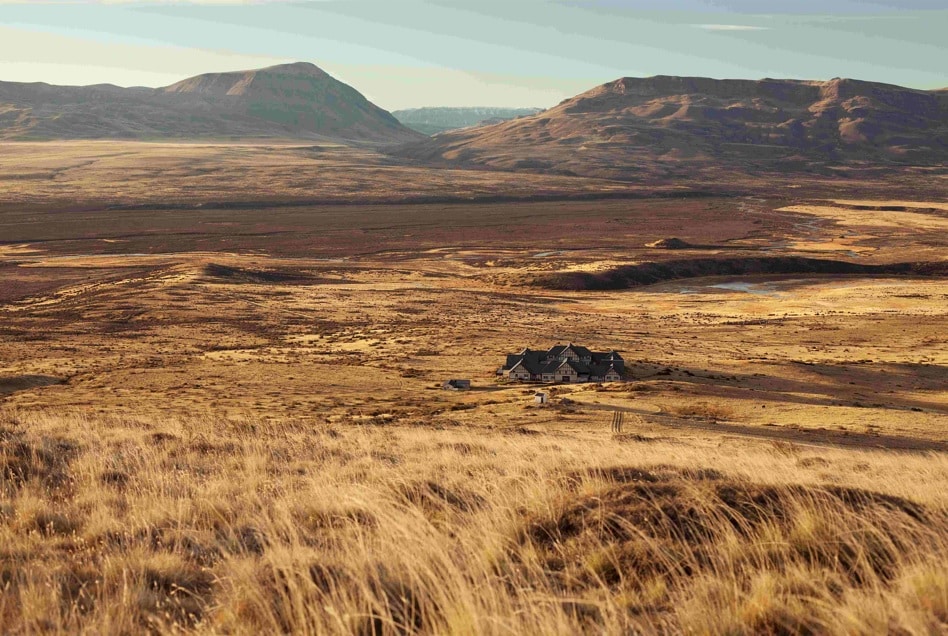
The Desert of Patagonia
The Patagonian steppe, located mostly in southern Argentina (and a little bit of Chile), is a vast and arid region characterized by its rugged landscapes and extreme climate. This semi-desert area stretches across more than 600,000 square kilometers, making it one of the largest and most remote ecosystems in South America. Temperatures in the Patagonian steppe can vary significantly, with cold winters often dipping below freezing and summers that can reach up to 30°C (86°F). The region is known for its strong winds, which can make the already harsh environment even more challenging. It spreads mostly across the provinces of Chubut, Santa Cruz, and parts of Neuquen, Rio Negro, and Tierra del Fuego.
Geology of the Patagonian Steppe
The geology of the Patagonian steppe is as diverse and fascinating as its wildlife. The region is characterized by vast plateaus, volcanic formations, and ancient rock outcrops. Much of the landscape is shaped by the effects of wind and water erosion over millions of years. The steppe features extensive basaltic lava flows and sedimentary rock layers, some of which date back to the Jurassic period. One of the most remarkable geological features is the Meseta de Somuncurá, a volcanic plateau that offers insight into the area’s volcanic activity. Additionally, the Patagonian steppe contains numerous fossils, including those of dinosaurs, which provide a window into the prehistoric life that once roamed this region. However, the steppe is not only flat, it counts with several canyons with colorful cliff that are quite inspiring!
Fora and Plants of the Steppe
The flora of the Patagonian steppe is specially adapted to its arid conditions. The vegetation primarily consists of hardy shrubs, grasses, and thorny bushes. Common plant species include the coirón grass, which forms dense tufts that provide essential cover for wildlife. Other notable plants are the mata negra, a low-lying shrub, and the neneo, a spiny bush. These plants have evolved to survive with minimal water and withstand strong winds. During the spring, the steppe experiences a brief but vibrant burst of wildflowers, adding splashes of color to the otherwise muted landscape. The vegetation not only supports the local wildlife but also prevents soil erosion, playing a crucial role in maintaining the ecosystem.
Mate negre (Junellia tridens) is a dense bush with yellow flowers that retains moisture, making it ideal for the arid climate. Cushion plants (Azorella trifurcata) are compact and low-lying, with deep roots to access nutrients in poor soil. Pallo amarillo (Berberis montana) adds a splash of color with its yellow flowers and purple berries. Other notable plants include the peppertree (Schinus latifolius) and hierba negra (Mulinum spinosum), both of which are well-suited to the steppe’s conditions
Tourist Attractions in the Patagonian Steppe
Despite its harsh conditions, the Patagonian steppe offers a variety of attractions for tourists. On this post, we’re also including attractions of the “meseta” or “patagonian plateau”, which is not strictly steppe but it has similiarities, and for the touristic purposes is very useful to mention them.
One of the popular destinations is Peninsula Valdes, a UNESCO World Heritage site known for its stunning coastal landscapes and abundant marine wildlife, including Southern Right Whales, Penguins, Orcas, Foxes, Guanacos, Rheas, and many other animals.
The Cueva de las Manos, or Cave of Hands, is another significant site, featuring ancient rock art that dates back over 9,000 years. Cueva de las Manos is in Patagonia Argentina National Park, which counts with other attractions such as the River Pinturas Canyon and Tierra de Colores. Visitors can also explore the Petrified Forests of Sarmiento, La Leona, and Jaramillo (located in different areas), where fossilized trees offer a glimpse into the region’s ancient past. The steppe is dotted with unique geological formations, vast salt flats, and picturesque lakes, making it a paradise for photographers and nature enthusiasts.
Puerto Deseado and the Altantic Coast offer jurassic-like views that combine ocean wildlife and the immensity of the steppe, next to Ruta 3. On the other side of the country, closer to Ruta 40, we can connect the steppe with attractions in the Andean Patagonian Forests, such as El Chalten (Fitz Roy and Torre Mounts) and Los Glaciares National Park (close to El Calafate and Glacier Perito Moreno). This allows the traveler to have an incredible contrast between the patagonian desert and the dramatic landscapes of the glaciers, forests, mountains, and rivers of Andean Patagonia.
The Piedra Parada volcanic neck in Chubut and the basalt columns at Valle de los Altares are notable geological highlights.
Campamento Darwin is where Charles Darwin wrote his famous phrase ““…I do not think I ever saw a spot which appeared more secluded from the rest of the world, than this rocky crevice in the wide plain.”
Wildlife of the Patagonian Steppe
The Patagonian steppe is home to a diverse array of wildlife, adapted to survive in this challenging environment. Guanacos, a type of wild camelid, are commonly seen grazing on the sparse vegetation. The Patagonian mara, a large rodent resembling a rabbit, is another curious inhabitant, same as the Chinchillon Anaranjado and the Pichi Hairy Armadillo. Predators such as the Pumas, Patagonian gray fox and the Andean condor, one of the world’s largest flying birds, can also be spotted. Birdwatchers can be delighted by the presence of the Maca Tobiano, Cormorants, Petreles, and larger birds such as the Darwin’s rhea, a flightless bird native to the region. Other animals from the Ocean approach the coasts of Patagonia, including Penguins, Whales, Sea Elephants, Sea Lions, and Orcas. To see these animals in their natural habitat, visitors can explore areas like the Valdés Peninsula, Punta Tombo, Cueva de las Manos, Puerto Deseado, and various natural reserves throughout Patagonia.
Road Trips and Wildlife Tours in Patagonia
For those looking to experience the Patagonian steppe up close, road trips along Ruta 40 and Ruta 3 offer an unforgettable adventure. Ruta 40, one of the longest highways in the world, runs parallel to the Andes and provides access to some of Patagonia’s most spectacular scenery. Ruta 3, on the other hand, follows the Atlantic coast and leads to the southernmost city of Ushuaia. Both routes offer opportunities to explore remote landscapes, visit charming towns, and encounter wildlife along the way.
The Patagonian Steppe can also be visited through private or shared guided excursions, not only self-drive tours.
In Beyond BA Latam we organize personalized tours in Argentina and Chile, helping travelers to experience the region’s natural beauty and diversity in the best possible way.
We offer tours that include attractions of the Patagonian Desert, and also other destinations, ecosystems, and attractions beyond the steppe.
As a kick off, we invite you to explore our travel samples, that can be adapted to your convenience:
Let’s plan your next adventure!
0






